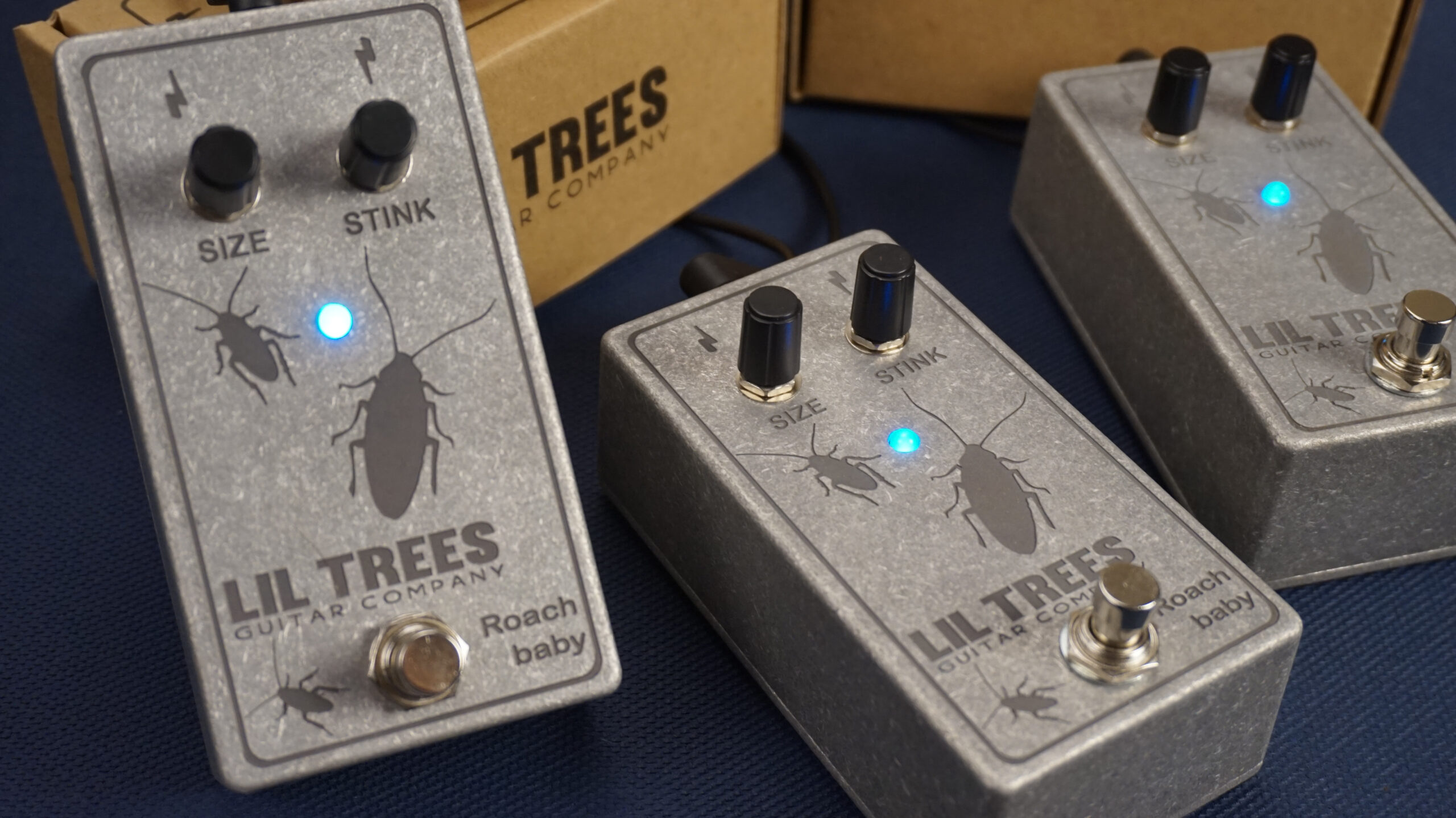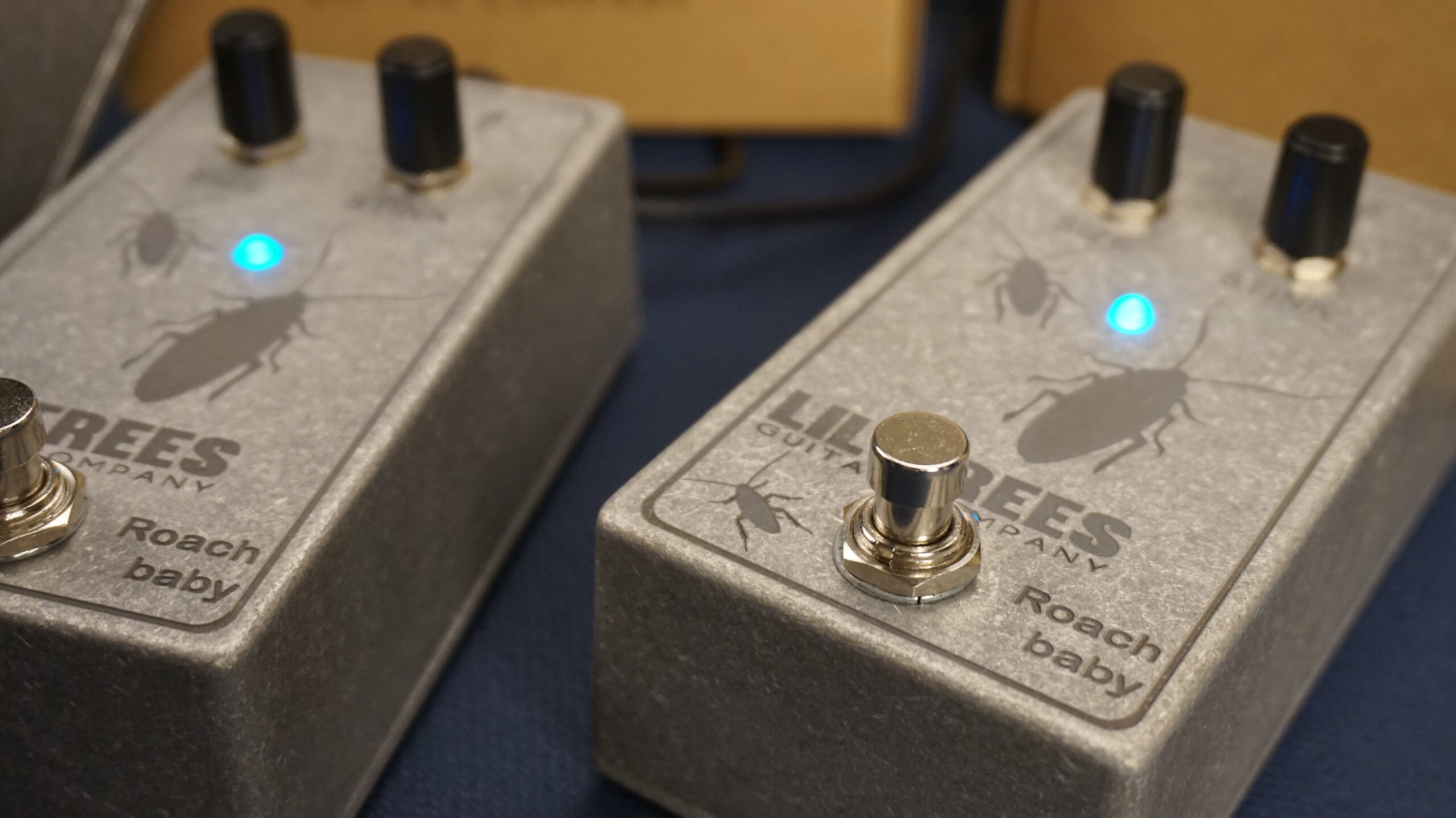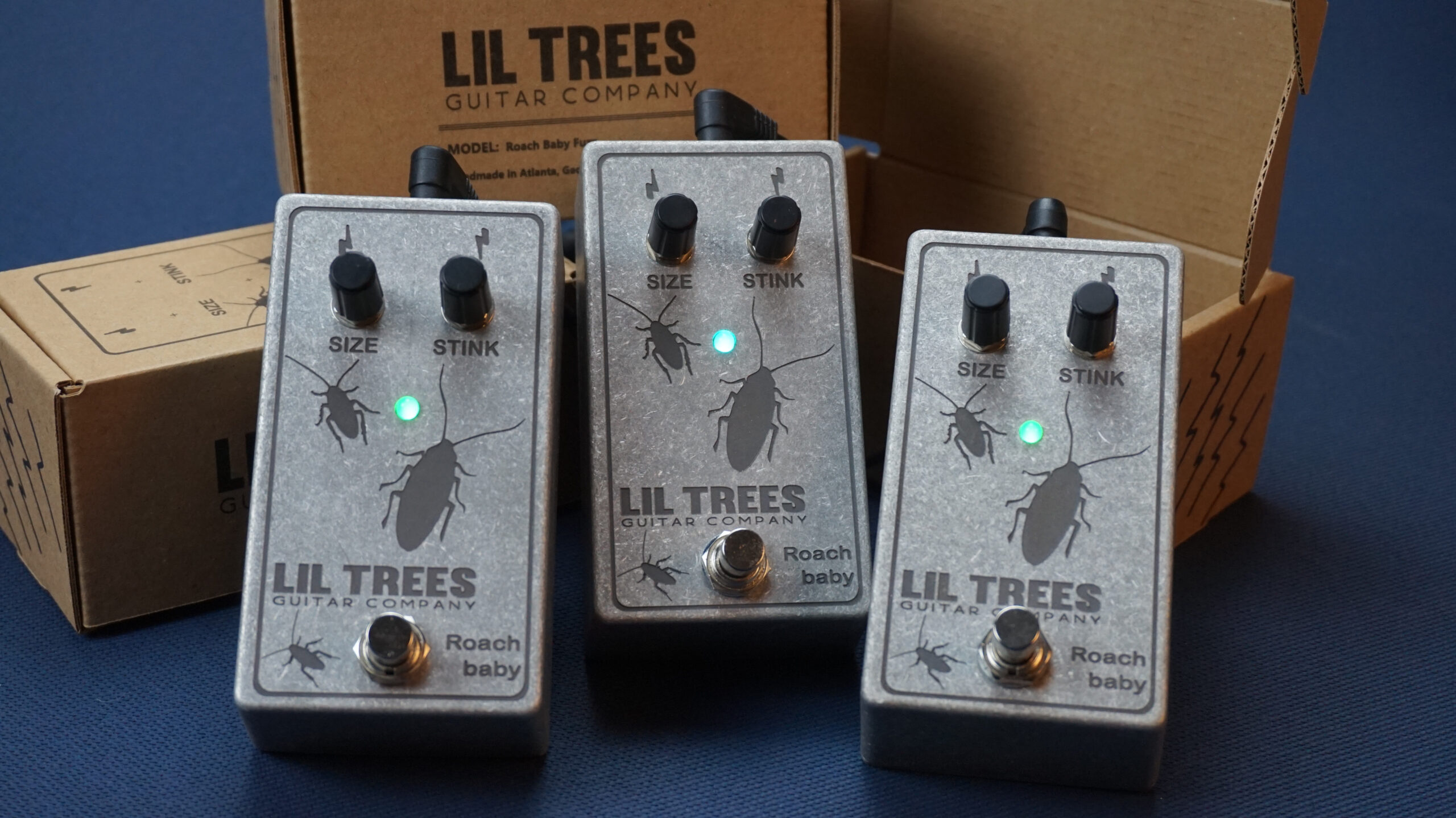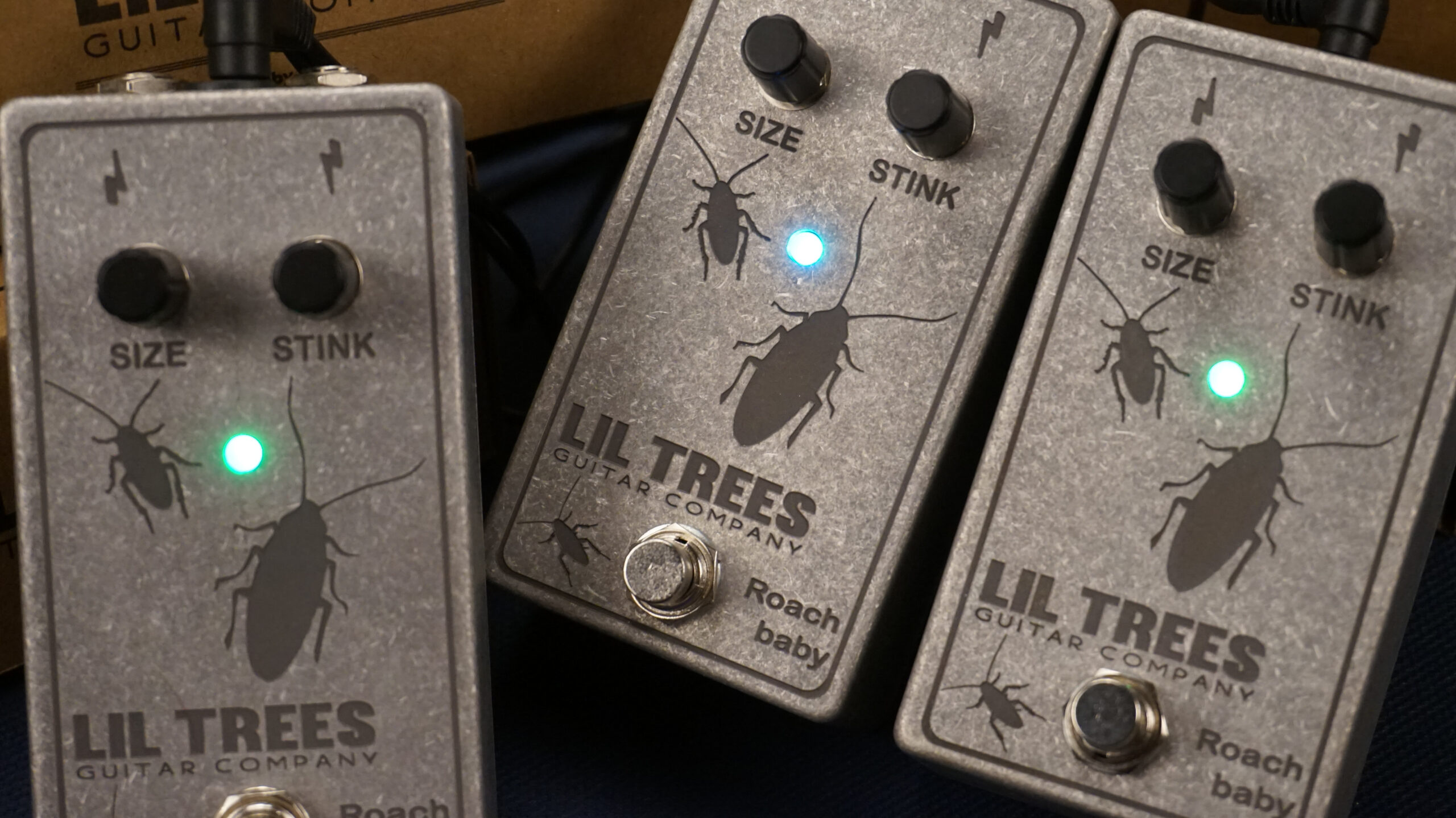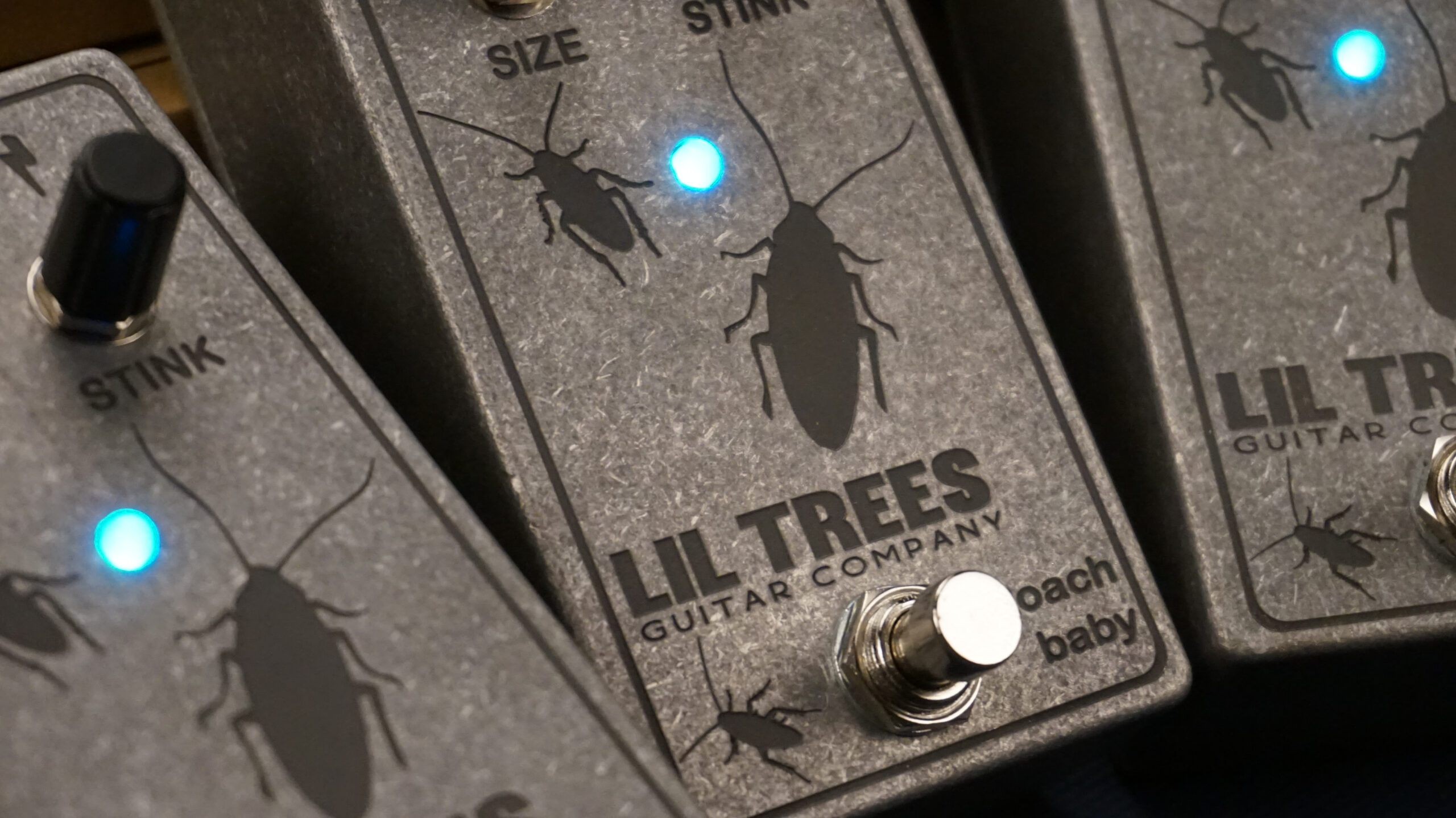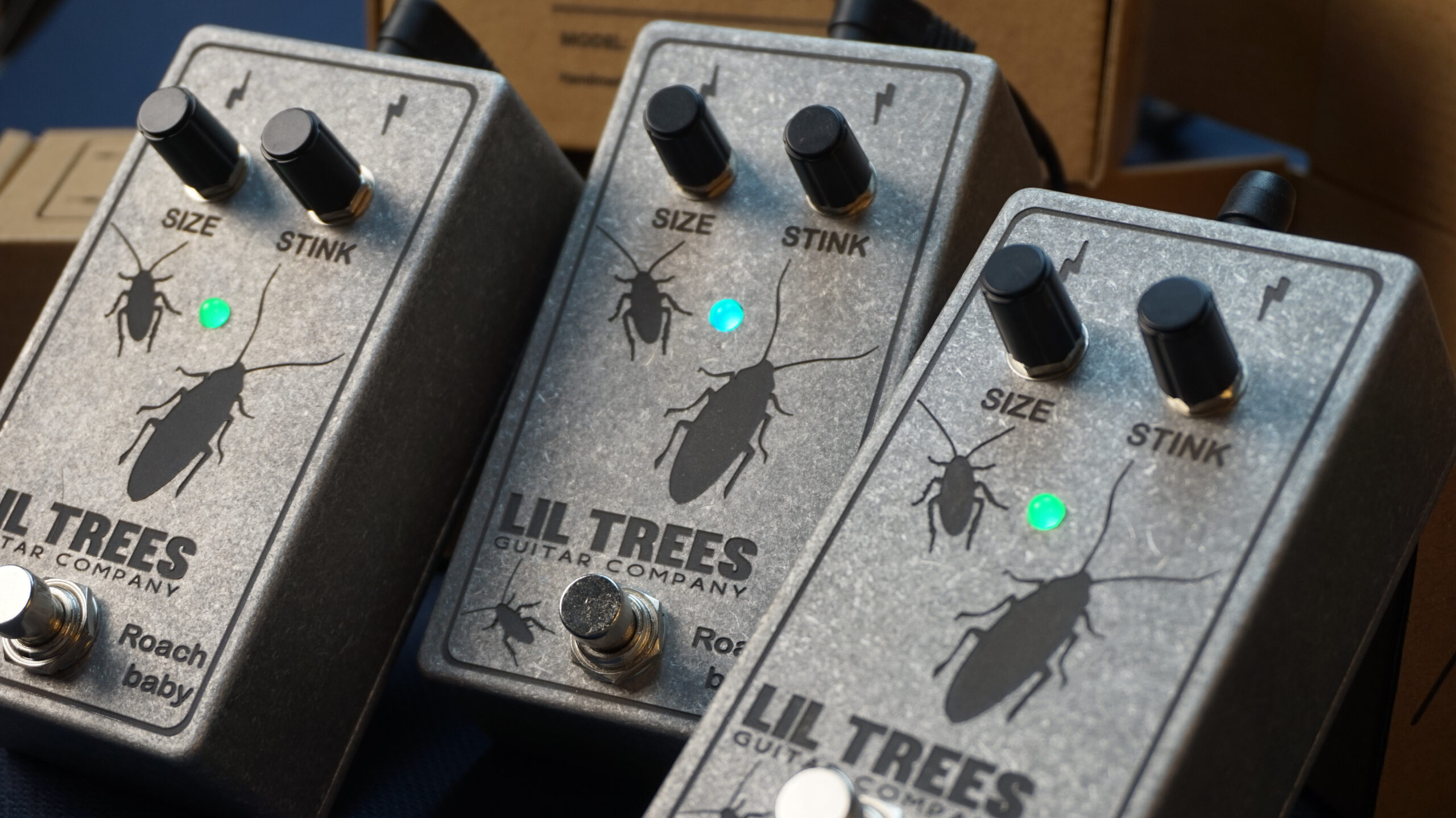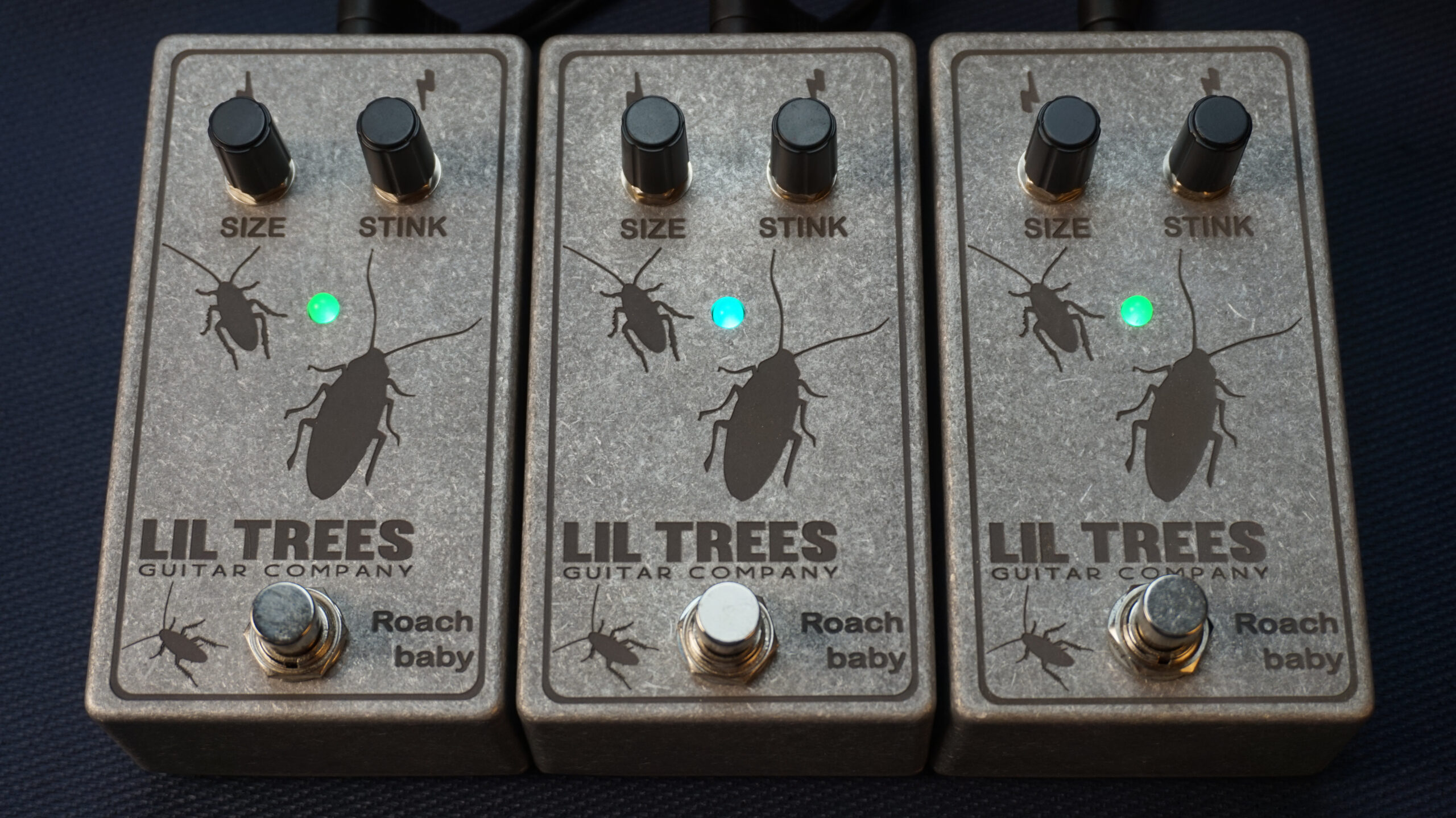Roach Baby Fuzz Pedal
The Roach Baby has a three-transistor topology based on a pretty rare unit from the Sunn amplification company, called the Sunn Buzz. While it is based on that fuzz unit, there have been a few changes made to get it to be a bit more usable. It is a silicon based gated fuzz with a two-control layout. Volume and gain controls are outside the box, and gate/sag you set internally. This circuit is great for classic lead tones, thick chunky rhythms, from wall of sound type tones, all the way to scratchy cleaner tones. This is an easy to control, versatile rock and roll dirt box.
FEATURES:
Like with many of the Lil Trees effects, this circuit is equipped with both Synesthesia, and polarity protection. Unique to the Roach baby is the gate/sag control.
Synesthesia is a simple light controller circuit that is built into the controls of most Lil Trees pedals. It’s nothing more than a light intensity controller. When the device is “ON” and you’re dialing in your settings, you’ll notice that the color, and intensity of color changes when you adjust the knobs. I feel that this is another line of protection for musicians in a live setting; sometimes things get moved around when you’re on stage, and you don’t really notice the controls have moved until you’re already a measure into your solo. At least with a specific color that shows when your pedal is dialed into your personal settings, it’s unlikely you would miss a change, if things get bumped around. It’s also just a lot of fun to see what your color will be when you’re using any of the Lil Trees guitar co.’s pedals.
Polarity protection is a special circuit that protects the pedals circuitry. Unlike many protection circuits, it will not destroy itself protecting the effect circuit for an amount of time but, protecting the circuit while also not destroying itself. This means that it is impossible to bring harm to the internal circuitry by accidentally introducing the wrong voltage or polarity of power to the power input jack. This I find is very useful to musicians because of obvious reasons... Like, how sometimes things get plugged into the wrong power source, or maybe you weren’t completely sure whether that power supply had a negative or positive tip. With a polarity protection circuit, one need not worry over these details, because if it isn’t the correct supply, the device simply will not power on, and if it’s the correct supply type, the device will perform satisfactorily. This simple protection circuit ensures the device will live a long life with very few interruptions.
CONTROLS:
There are two knobs, “Size” & “Stink”. The “Stink” knob is your fuzz control; this control will introduce or take away the intensity or amount of fuzz the circuit is putting on your wet signal. The “Size” knob is your volume control, as such this knob will adjust the overall output level of the effect. Unique to the Roach Baby pedal is a special internal trimmer pot used to adjust the amount of gating taking place relative to your guitars signal strength. This is because the internal trimmer is simulating a fully charged battery, or a dying battery. Using a small Phillips or flat head screwdriver, you can adjust the gate sensitivity of the pedal. This is a nice feature for a gated fuzz to have, because it helps a single coil hit the circuit the same way a humbucker does, and it can also do the exact opposite, in that it can make that humbucker sag, and fizzle as though it were a pickup with significantly less output.
THE SOUND:
It's doomy and raunchy without being as aggressive as you may think . The Roach Baby will fit in with and inspire stoner riffs with no issue. This pedal will sit well in a band mix because its lower frequencies are very well subdued.
When the gate set to a more mid-way-open kind of position (~1.6vdc), you'll have a very nice classic stoner rock sounding tone; controlled highs, pronounced mids, dusty lows – you hear the low strings in the air more than you feel them at high volumes.
With the gate set to a higher voltage (>1.6vdc), the tone will be far more aggressive, and the character of the fuzz will become very zipper and a lot louder. The EQ of the unit will be more or less the same, but snappier and louder.
When the gate is set to a lower voltage (<1.6vdc), the gate effect will become more pronounced, and you will notice the attack and decay of the notes becoming a lot more spitty and compressed; it may even feel as though the notes are dropping out on you. This fuzz is sensitive to pickup types. It’s helpful to experiment with this and dial it in for the guitar you run through it.


